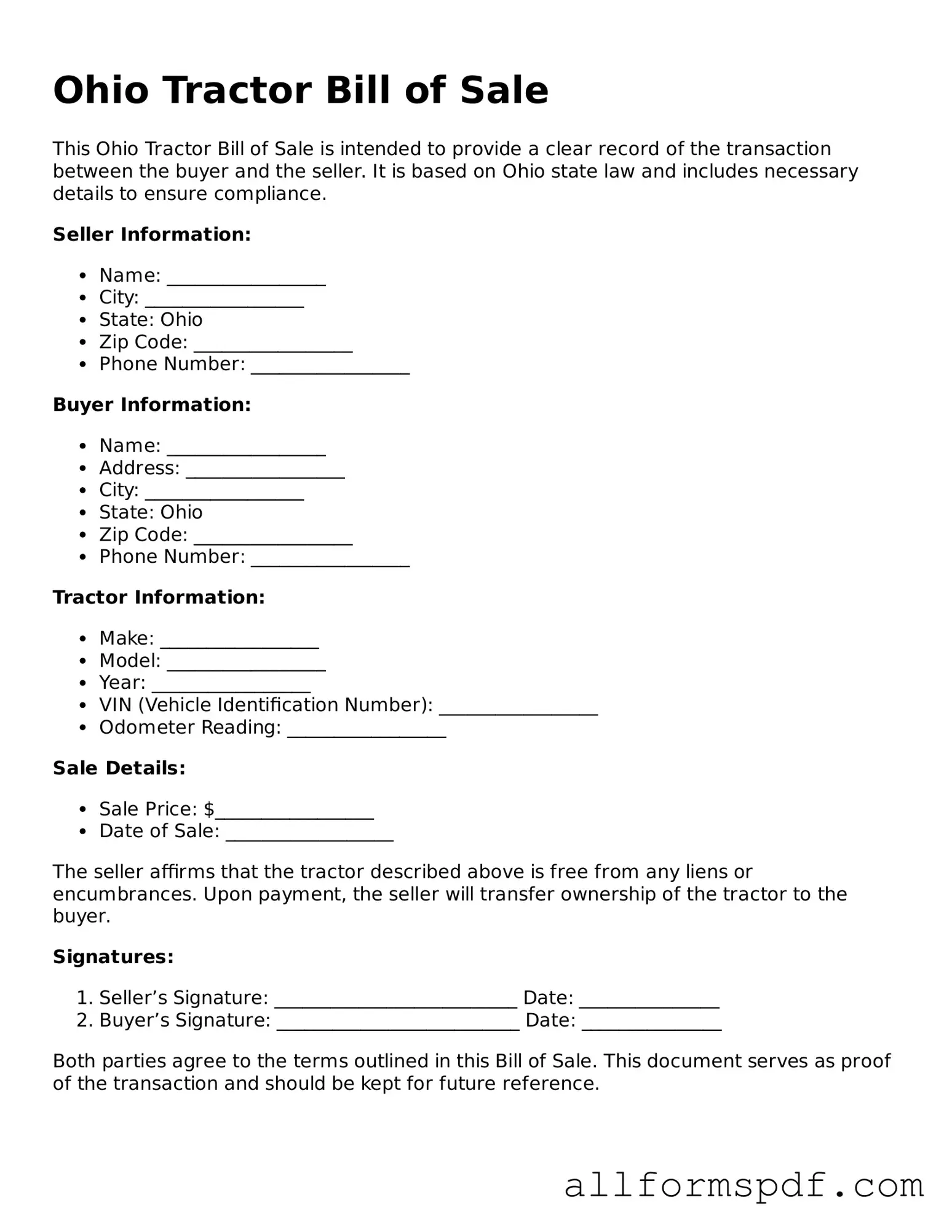Filling out the Ohio Tractor Bill of Sale form can seem straightforward, but many people make common mistakes that can lead to complications down the line. One frequent error is not providing complete information about the tractor being sold. Buyers and sellers should ensure that all relevant details, such as the make, model, year, and Vehicle Identification Number (VIN), are accurately recorded. Missing or incorrect information can create confusion and may even affect the registration process.
Another mistake often made is failing to include the correct sale price. It's essential to document the agreed-upon price clearly. Some individuals may overlook this detail or write an ambiguous amount. This omission can lead to disputes between the buyer and seller or issues with tax authorities, who rely on the sale price for tax calculations.
Not signing the form is another common oversight. Both the buyer and seller must sign the Bill of Sale to validate the transaction. Without signatures, the document may not hold up as proof of sale in case of future disputes. It’s advisable to double-check that all required signatures are present before finalizing the sale.
People also sometimes forget to date the form. Including the date of the transaction is crucial for establishing when the sale occurred. This date can be important for legal purposes, such as determining ownership and liability. A missing date could lead to complications if questions arise later about the timing of the sale.
Lastly, not keeping a copy of the completed Bill of Sale is a mistake that can have serious consequences. After filling out the form, both parties should retain a copy for their records. This document serves as proof of the transaction and can be vital if any issues arise in the future. Keeping a copy ensures that both parties have access to the details of the sale, protecting their interests.
